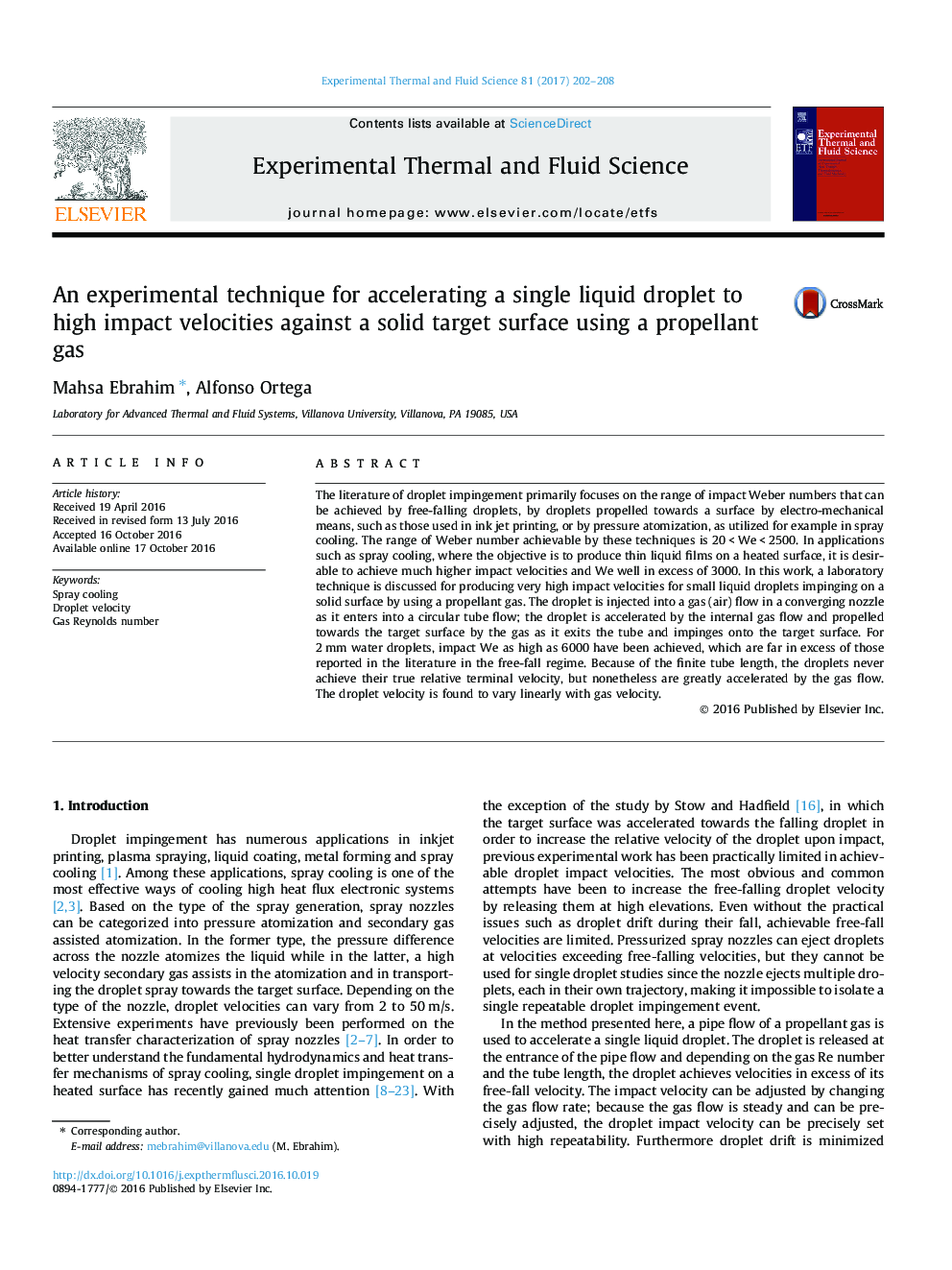| کد مقاله | کد نشریه | سال انتشار | مقاله انگلیسی | نسخه تمام متن |
|---|---|---|---|---|
| 4992527 | 1457395 | 2017 | 7 صفحه PDF | دانلود رایگان |
عنوان انگلیسی مقاله ISI
An experimental technique for accelerating a single liquid droplet to high impact velocities against a solid target surface using a propellant gas
ترجمه فارسی عنوان
یک روش آزمایشی برای شتاب دادن یک قطره مایع به سرعت ضربه بالا در برابر یک سطح هدف جامد با استفاده از گاز پروانه ای
دانلود مقاله + سفارش ترجمه
دانلود مقاله ISI انگلیسی
رایگان برای ایرانیان
کلمات کلیدی
خنک کننده اسپری، سرعت قطره، تعداد گاز رینولدز،
موضوعات مرتبط
مهندسی و علوم پایه
مهندسی شیمی
جریان سیال و فرایندهای انتقال
چکیده انگلیسی
The literature of droplet impingement primarily focuses on the range of impact Weber numbers that can be achieved by free-falling droplets, by droplets propelled towards a surface by electro-mechanical means, such as those used in ink jet printing, or by pressure atomization, as utilized for example in spray cooling. The range of Weber number achievable by these techniques is 20 < We < 2500. In applications such as spray cooling, where the objective is to produce thin liquid films on a heated surface, it is desirable to achieve much higher impact velocities and We well in excess of 3000. In this work, a laboratory technique is discussed for producing very high impact velocities for small liquid droplets impinging on a solid surface by using a propellant gas. The droplet is injected into a gas (air) flow in a converging nozzle as it enters into a circular tube flow; the droplet is accelerated by the internal gas flow and propelled towards the target surface by the gas as it exits the tube and impinges onto the target surface. For 2 mm water droplets, impact We as high as 6000 have been achieved, which are far in excess of those reported in the literature in the free-fall regime. Because of the finite tube length, the droplets never achieve their true relative terminal velocity, but nonetheless are greatly accelerated by the gas flow. The droplet velocity is found to vary linearly with gas velocity.
ناشر
Database: Elsevier - ScienceDirect (ساینس دایرکت)
Journal: Experimental Thermal and Fluid Science - Volume 81, February 2017, Pages 202-208
Journal: Experimental Thermal and Fluid Science - Volume 81, February 2017, Pages 202-208
نویسندگان
Mahsa Ebrahim, Alfonso Ortega,
